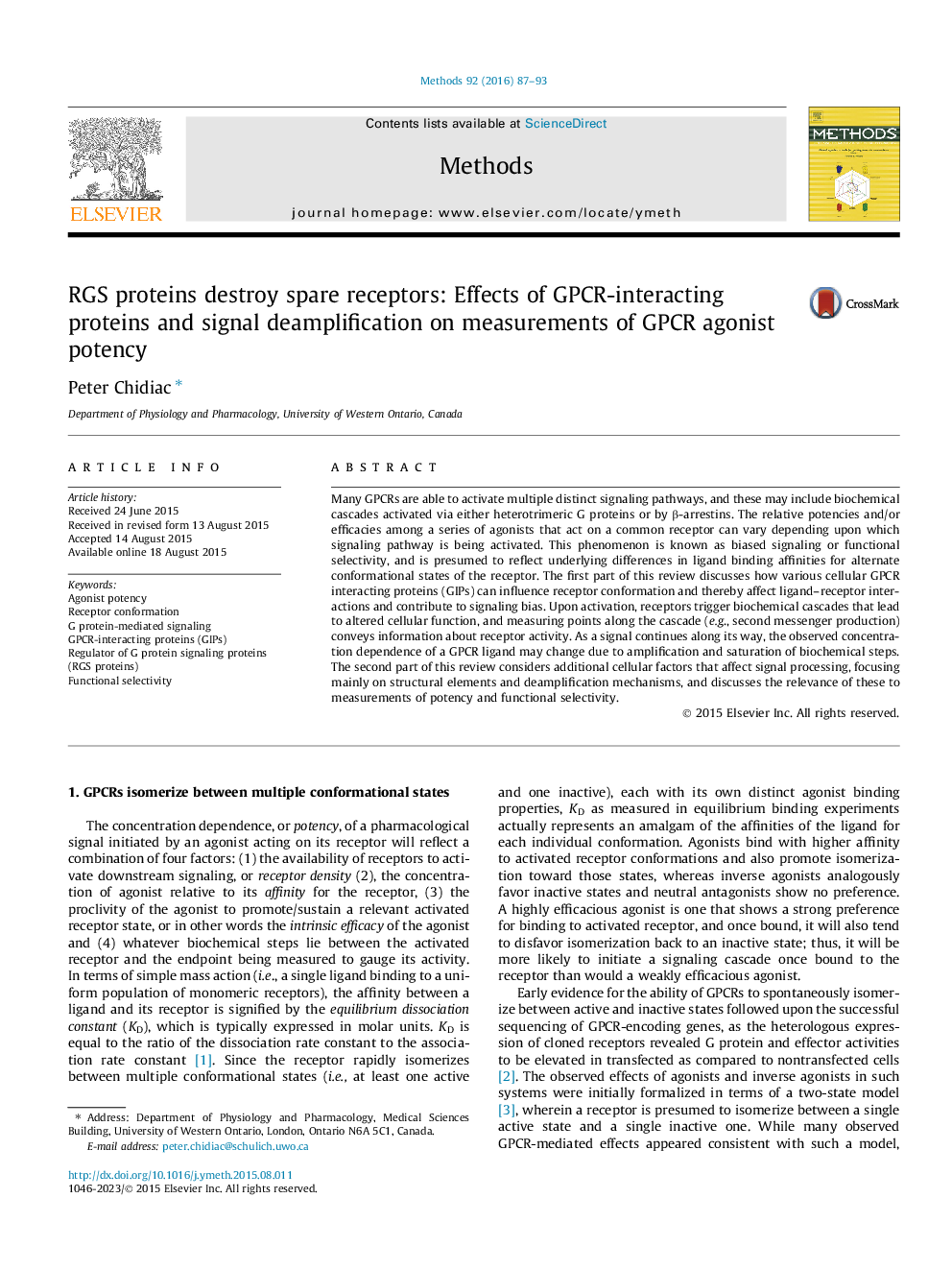| Article ID | Journal | Published Year | Pages | File Type |
|---|---|---|---|---|
| 1993216 | Methods | 2016 | 7 Pages |
Abstract
Many GPCRs are able to activate multiple distinct signaling pathways, and these may include biochemical cascades activated via either heterotrimeric G proteins or by β-arrestins. The relative potencies and/or efficacies among a series of agonists that act on a common receptor can vary depending upon which signaling pathway is being activated. This phenomenon is known as biased signaling or functional selectivity, and is presumed to reflect underlying differences in ligand binding affinities for alternate conformational states of the receptor. The first part of this review discusses how various cellular GPCR interacting proteins (GIPs) can influence receptor conformation and thereby affect ligand-receptor interactions and contribute to signaling bias. Upon activation, receptors trigger biochemical cascades that lead to altered cellular function, and measuring points along the cascade (e.g., second messenger production) conveys information about receptor activity. As a signal continues along its way, the observed concentration dependence of a GPCR ligand may change due to amplification and saturation of biochemical steps. The second part of this review considers additional cellular factors that affect signal processing, focusing mainly on structural elements and deamplification mechanisms, and discusses the relevance of these to measurements of potency and functional selectivity.
Related Topics
Life Sciences
Biochemistry, Genetics and Molecular Biology
Biochemistry
Authors
Peter Chidiac,
